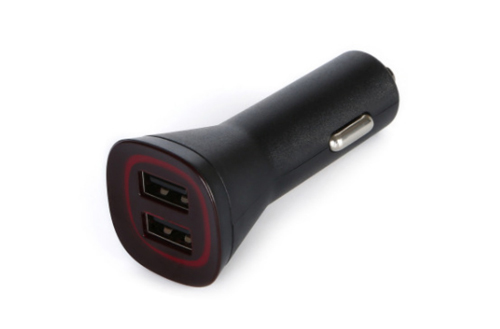1、 What do the nominal voltage and current of a power adapter (hereinafter referred to as a power supply) mean? Firstly, the nominal voltage of a general power supply refers to the open circuit output voltage, which is the voltage when there is no external load and no current output. Therefore, it can also be understood that this voltage is the upper limit of the power supply output voltage.
When active voltage stabilizing components are used inside the power supply, even if the mains voltage fluctuates, its output remains constant. For example, small transformers on the market, such as portable power supplies, if the mains voltage fluctuates, the output of the power supply will not fluctuate accordingly.
Generally speaking, the true no-load voltage of ordinary power adapters may not be exactly the same as the nominal voltage, because the characteristics of electronic components cannot be completely consistent, so there is a certain degree of error. The smaller the error, the higher the requirement for consistency of electronic components, and the higher the production cost, so the price is also more expensive.
In addition, regarding the nominal current value, any power supply has a certain internal resistance, so when the power supply outputs current, it will generate a voltage drop internally, resulting in two things: one is the generation of heat, so the power supply will heat up, and the other is the decrease in output voltage, which is equivalent to internal consumption.
2、 Can power supplies with the same nominal voltage and different output currents be used on the same laptop?
Can the same power supply voltage be used on the same laptop with different output currents. The basic principle is that a power source with a high nominal current can replace a power source with a low nominal current. Some people may think that a power supply with a high nominal current will burn out the laptop because the current is too high. In fact, the current depends on the load when the voltage is the same.
When the laptop is operating at high load, the current is higher. When the laptop enters standby mode, the current is lower. A power supply with a higher nominal current has sufficient current margin. On the contrary, it is not a problem for some people to use a 56W power supply instead of a 72W one. The reason is that the design of the power adapter usually leaves a certain margin, and the load power is less than the power supply power. Therefore, this substitution is feasible for general use, but the remaining power supply power is very small. Once your laptop is connected to many peripherals, such as two USB hard drives, and the CPU runs at full speed, there is also a base on which an optical drive reads the disk at full speed, and at the same time charges the battery, it is estimated to be dangerous. You need to touch your power supply at any time to see if it can cook eggs. So it's best not to use a low current power supply instead of a high current power supply.





